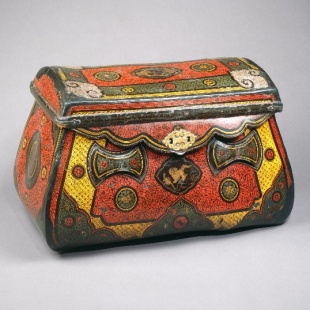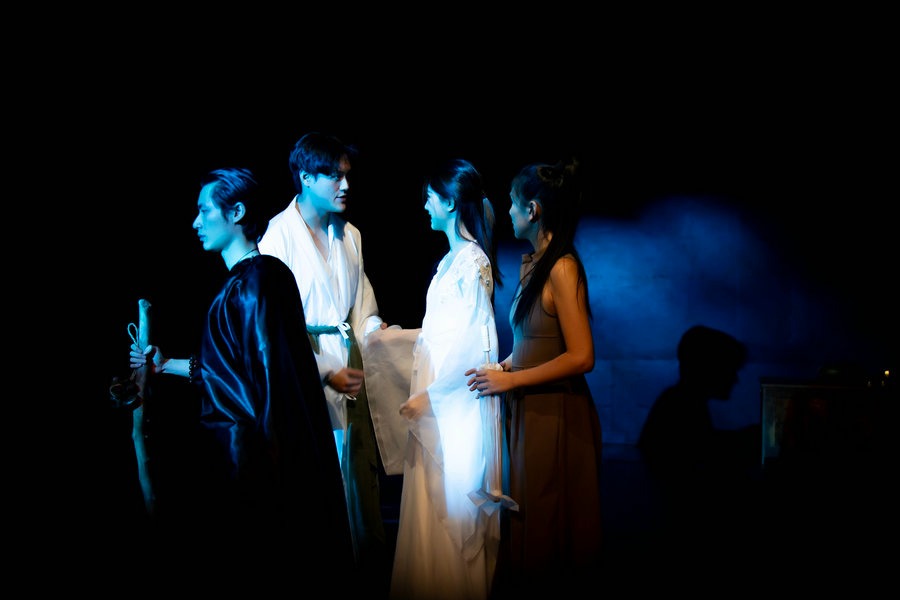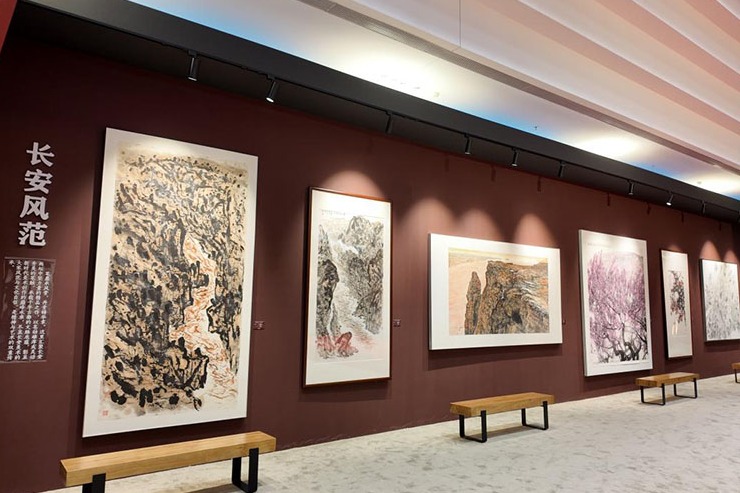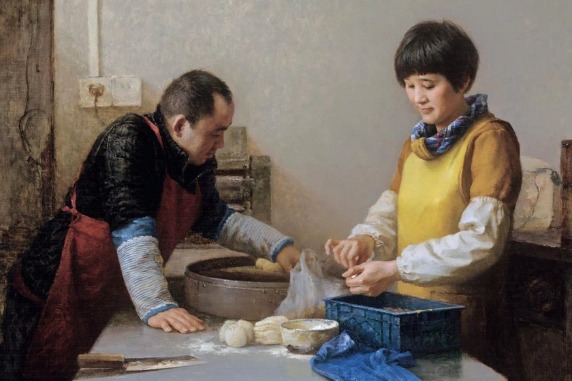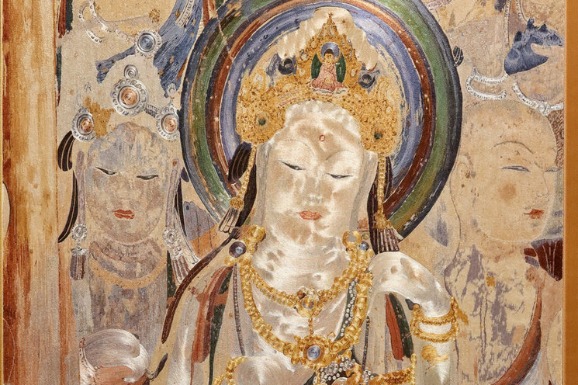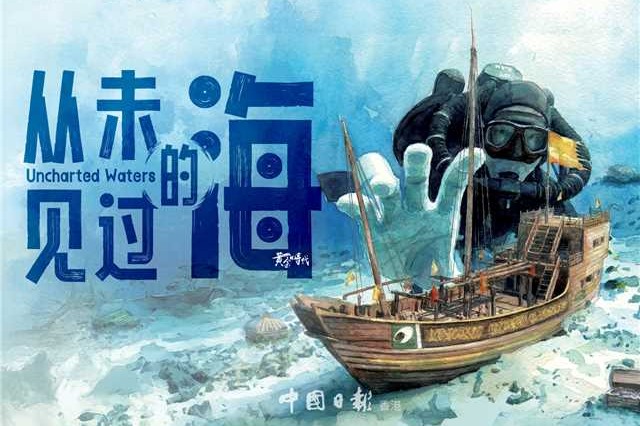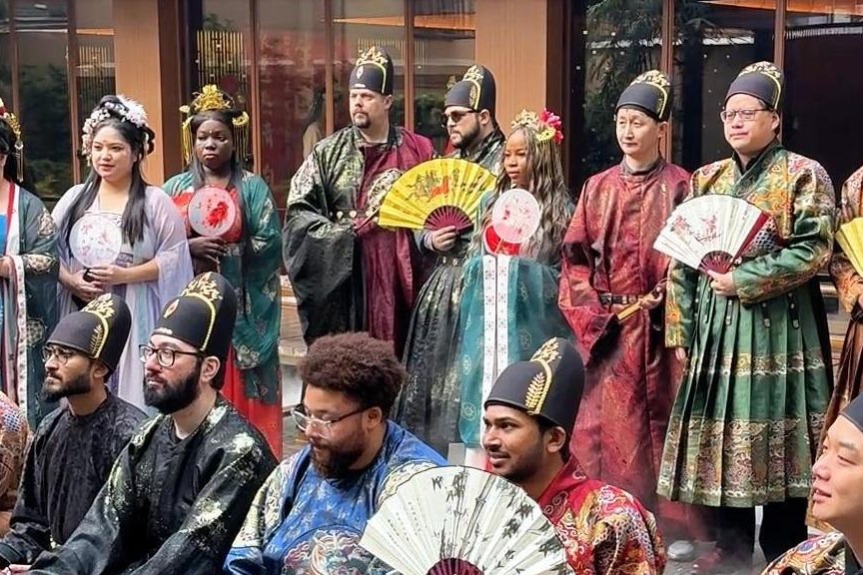Sights, sounds and scents from a sparkling thread


There's nothing wildly unusual about a piece of blue-and-white porcelain from ancient China. After all, every museum with a China collection seems to have one or two, if not a couple dozen, of them. But for Susan Beningson, curator of Chinese art at the Brooklyn Museum, a 14th-century wine jar with blue-painted fish and aquatic plants provides an entry point to the museum's newly installed China gallery. "This is one of the great masterworks of our museum's much-prided ceramic collection," she said in late October, when the gallery opened after a six-year renovation.
It was produced by the imperially sponsored kilns of Jingdezhen in Jiangxi province at a time when blue and white ceramics were luxury goods, she said.
"If you look really closely, you can detect flecks of black in the rich cobalt blue paint. This points unequivocally to the mineral mined in Western Asia, from where it was exported across the ancient Silk Road to China for use by its craftsmen."
She was referring to the trans-Eurasian trade network that linked China with vast land to its west, from little kingdoms scattered across the Gobi Desert to the shore of the Mediterranean and Rome.
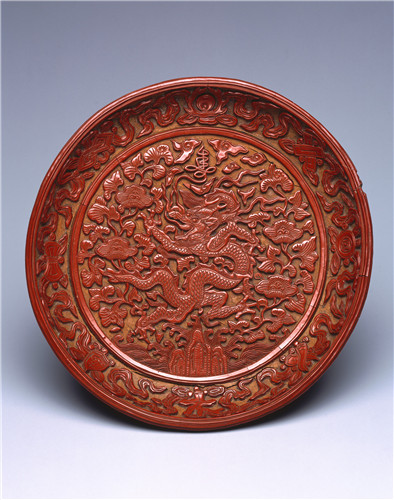
On top of its position in the history of international trade, the jar offers a case study in how ancient Chinese relied on homophones to do well-wishing.
While fish (yu), shares the same pronunciation with a word meaning surplus, the lotus flower (lian), provides a rebus for the idea of continuity. Put together, they fulfill a major Chinese longing, to be seriously spoiled by ceaseless abundance.
The jar was part of a large bequest of Chinese ceramics from the Hutchins family collection in Long Island, New York, Beningson said.
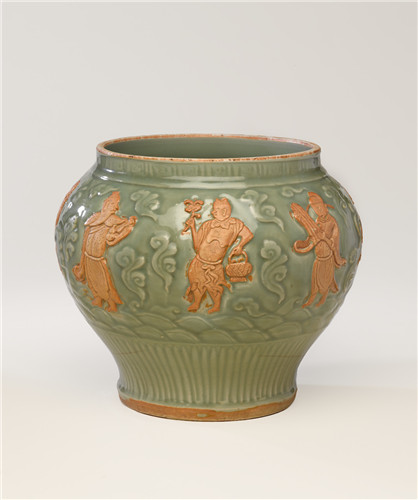
"When the father died in 1952, the son invited the then curator of Chinese art to go to the estate on Long Island and pick things. But this was not initially among the things chosen from the rather dusty collection. Before the curator left, he went to wash his hands on a sink in the garage, and the fish jar was under the sink catching drips of water. The curator asked: 'Can we have that too?' And they said yes. The jar was then put on the truck and came to Brooklyn."
In fact, if you listen to Beningson, the new China gallery showing, which features 140 pieces, is as much about the formation of the museum's remarkable Chinese collection as it is about Chinese art, ancient and modern.
Cloisonne wares, the other strength of the museum apart from porcelain, came in 1909, donated by an American collector in Brooklyn whose brother lived in Beijing and was in charge of buying antiques and sending them to the New York borough.
In another example, a first-century bronze mirror on view was bought by Stewart Culin (1858-1929), the museum's first curator of non-Western art, who traveled to Asia, including China, between 1909 and 1912.


